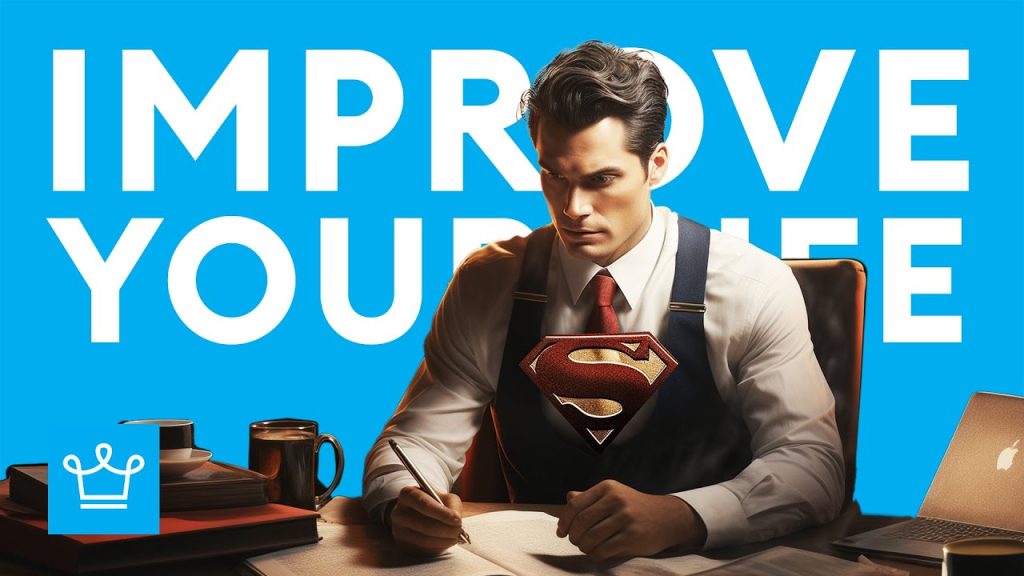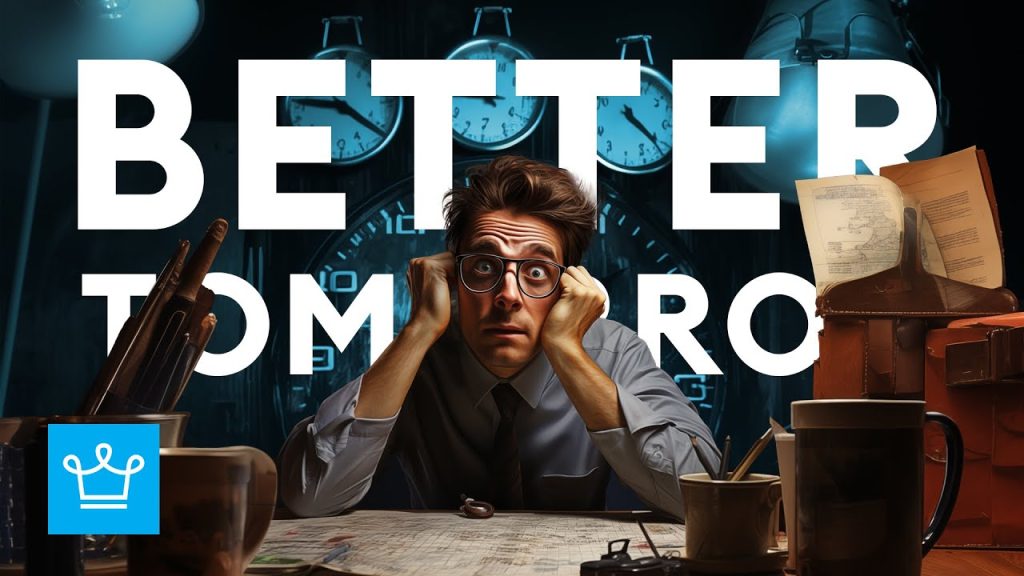The Journey of Lamborghini’s Struggles and Success!
Hello, Aluxers, and welcome back. Today we’re going to look at a brand of cars that turns heads and stops people in their tracks everywhere they go. Lamborghini is not only one of the most in-demand luxury cars worldwide but also one of the most unique style of cars available. This is why these cars have been heavily featured on posters found everywhere posters are sold. But how did this company develop from a humble tractor manufacturer to where they are today?
We’re going to take you through that journey, but first let’s see where the company stands today.
- The Big Picture
- The Beginning
- The Struggle
- The Choice
- Strategy
- Turning Point
- More Struggle
- Defining Moment
- Results
- The Future
- The Value
- Closing
- Question
If you are someone who would rather watch colorful visuals over dull text, here’s the whole article for you covered in our YouTube video:
With that checked out, let’s discuss how Lamborghini became the king of poster cars.
The Big Picture
Lamborghini is a well-established Italian luxury sports car and SUV manufacturer. Their current offerings consist of three model lines: the Aventador, Huracan, and Urus, but they are also known for their popular Murcielago and Diablo models. Lamborghini has been posting record numbers in recent years, achieving an unprecedented goal in 2018 with 5,750 new vehicles delivered worldwide.
This is compared to the 3,815 new cars that were delivered in 2017, which was the previous record. This represents a 51% rise in global sales and continues the eight year trend of growth for the company. This was achieved through doubling the production capacity at the headquarters in Sant’Agata Bolognese [Sant-ah-got-ah Bowl-en-aise], Italy, which bodes well for future sales.
The biggest market for Lamborghini continues to be the US with over 30 percent of all sales, distantly followed by the United Kingdom and Japan. As of 2019, the company is valued at 11 billion dollars, which puts the company almost on par with their long-time competitor, Ferrari. But it was a long and twisty road for Lamborghini to end up where they are now, so let’s go back to when the company first began.
The Beginning
Ferruccio Lamborghini saw an opportunity after World War 2 to sell agricultural machinery. The demand was high in Italy, so it was just a matter of creating supply. He built his first tractor using parts from discarded military vehicles, and his business was an immediate success. He formed the Lamborghini Trattori company in 1948, and for about 15 years the tractors were the company’s focus. That is, until he got into an argument with Enzo Ferrari.
Feruccio had been one of Ferrari’s customers, but he was not happy with his car because there were constantly problems with the clutch. He went to have a talk with Ferrari about the issue, which didn’t go particularly well since Enzo told him the problem was with the driver, not the car. He told Lamborghini that he should stick to what he knows—tractors—and leave the cars to Ferrari. Lamborghini took that as a personal challenge, and he soon began working on building his own car with a V12 engine.
Lamborghini introduced their first cars in the mid-60s, and they quickly gained a reputation for being powerful, comfortable, and refined. Ferruccio himself defined Lamborghini as “refinement, luxury, and perfection.” Lamborghini as a car brand and manufacturer grew rapidly over the next ten years, but there were some dark times ahead.
The Struggle
After 10 years of constant growth and profits, Ferrucio began to face financial difficulties with his business. The problems started with his tractor line when a coup d’état led the country of Bolivia to cancel a large order that had already been partially completed. He ended up selling that portion of the business in 1972, but he continued to have difficulties as he worked to cut costs.
Later in 1972, he ended up selling 51 percent of his business to a Swiss investor named Georges-Henri Rosetti for 600,000 dollars. Lamborghini continued to work at the factory, and for a short while things seemed to be getting better.
But then a financial downturn and an oil crisis shook the world in 1973. Many people started looking for smaller, more fuel-efficient cars, and Lamborghini’s profits plunged. He finally sold his remaining 49 percent stake to another Swiss businessman in 1974 and retired. In 1978, after years of declining sales and producing poor quality vehicles, Lamborghini declared bankruptcy and was taken over by the Italian courts.
This easily could have been the end of the car company’s story, but one famous automobile executive helped turned things around.
The Choice
The rebirth of Lamborghini came down to Chrysler chairman Lee Iacocca choosing to buy the fledgling company in April 1987 for 25.2 million dollars. Over the previous 10 years, the company had been owned by Jean-Claude and Patrick Mirman, and these brothers did what they could to elevate sales with a comprehensive restructuring program, but only when the company was in Iacocca’s capable hands did its revival truly begin.
Iacocca was best known for developing the Ford Mustang and Pinto cars while an executive at the Ford motor company in the 1960s and then completely reviving the Chrysler corporation in the 1980s. When he said that he wanted Chrysler to buy Lamborghini, nobody on the board protested. He had several ideas to hit the ground running with his new acquisition.
Strategy
The first step in reviving the company was a 50 million dollar cash injection from Chrysler. Iacocca was interested in becoming a player in the extra premium sports car market, and he ultimately aimed at producing 5,000 cars for this market segment per year with Lamborghini. His immediate goal was to design and produce a car that could match the Ferrari 328 by 1991.
A new division was also created with the goal of developing engines for Grand Prix teams and entering the motorsport market for the first time. Lamborghini also began working on a new generation model that could take the place of their previous best-selling model, the Countach [Coon-tosh].
Resource: Is the new Lamborghini Centenario the world’s most expensive car?
Turning Point
After much contention between the design teams of Chrysler and Lamborghini, production finally began for their new generation model, the Diablo. The turning point for Lamborghini was when this supercar was introduced to the public on January 21, 1990, at the Hotel de Paris in Monte Carlo. The Diablo immediately captured attention as the fastest car production in the world at that time.
And after long last, Lamborghini finally began to make a profit, passing the $1 million mark in 1991. Yes, it seemed like everything was finally headed in the right direction for the company, but sadly more hard times were just around the corner.
More Struggle
The long-term problem with the Diablo was that the 239,000 dollar price point was too high for American car enthusiasts, so after an initial boom in sales, the market sharply declined in 1992. Within a couple years, Chrysler came to the conclusion that Lamborghini was a sinking ship, and they looked for someone to rid them of the burden. They ended up selling it to a conglomerate owned by the son of the President of Indonesia for 40 million dollars in 1994.
Three years later, the company sold 209 cars, which was just 13 cars more than was needed to have their first profitable year in five years. Again, just when it looked like the company may be on the upswing, a financial crisis hit Asia. This opened the door for Volkswagen to scoop up the company along with Bentley and Bugatti. Then a new day dawned for Lamborghini when Audi AG, a Volkswagen subsidiary, acquired the company for 110 million dollars in September 1998.
Defining Moment
With new ownership providing a boost in operating cash, Lamborghini designers went to work on the car that would symbolize the rebirth of the brand in what was known as Project L147. The car was designed by Belgian Luc Donckerwolke (Luke Don-ker-wulk), who had been named as Lamborghini’s new head of design. It was Lamborghini’s first new design in 11 years. That mystery car would be unveiled as the Murcielago in 2001, and sales opened up to America in 2002.
This would be Lamborghini’s flagship model for nine years with different variants, including a coupe, a roadster, and the SuperVeloce [Super-Vell-us]. The sustained success of this model helped bring Lamborghini consistently out of the red and set the stage for many years of global popularity.
Results
Under Volkswagen’s ownership, Lamborghini has found something they haven’t had in their entire history—stability. For the past 20 years, Lamborghini has been heading in a positive direction, and for nearly the past 10 years the company has consistently broken their production records and profits year after year.
After a total production run of 4,099 cars, the Murcielago was succeeded by the Aventador, which was introduced at the 2011 Geneva Motor Show and had a starring role in the 2014 movie Transformers: Age of Extinction. Other models that followed include the Gallardo, which is also known as the “baby Lambo”; the ultra-rare Veneno; the Centenario, which was designed to celebrate Ferruccio Lamborghini’s 100th birthday; the Huracan; and most recently the Urus [yur-iss] SUV.
The introduction of the Urus in 2018 was the primary reason for Lamborghini’s much higher rate of production and sales. The Urus is now outselling the Aventador and Huracan combined. But what can Lamborghini lovers expect for the future?
Resource: Lamborghini Aventador LP 750-4 SV: Fastest Lambo Ever
The Future
Lamborghini is moving in an exciting direction with the Sian [See-on], their first hybrid production vehicle with an electric motor. The car was unveiled in September 2019, and production is set to begin in 2020 with a limited run of 63 units to honor the year the company was founded. If you want one of these insanely attractive vehicles, you are out of luck at the moment.
All 63 models have already been spoken for, but more hybrids are planned for the future. And if you think some of the power will be lost due to the electric motor, think again. This car still boasts a top speed of 217 miles per hour and 819 horsepower, making it the most powerful Lamborghini ever built.
Bloomberg anticipates that the introduction of this hybrid supercar and a new version of the Aventador in 2020 combined with the success of the Urus should push Lamborghini’s margins above 30 percent. This has led to speculation that an IPO could be in the company’s not-too-distant future.
The current CEO, Stefano Domenicali [Doh-men-uh-call-ee], says that his goal for the future is to ensure that the brand maintains a balance between growth and exclusivity moving forward.
The Value
The average Lamborghini costs around 200,000 dollars, but prices go up into the millions. So what value do you get in exchange for the high purchasing cost? Number one is exclusivity. Lamborghini’s executives continually rank exclusivity as a top value of the company, and this is illustrated by the fact that less than 30,000 Lamborghinis were produced in the first 50 years of the car brand.
This means that unless you live in certain cities like Miami where the concentration of Lamborghinis is unusually high, you are likely to be the only one in your area driving this coveted supercar. But the value of these cars is based on so much more than mere production numbers.
Their distinctive designs have been turning heads for decades with their bold angular frames and innovative features. There is no way that a Lamborghini can be mistaken for any other car in the luxury market. And beyond that, Lamborghini offers some of the highest performance numbers in the market as well to make Lamborghinis even more powerful than they are beautiful.
Every Lamborghini is hand-built in the small Italian town where it all started. A specially trained team builds each car with great care over the span of six to seven days. Then the car goes through three rounds of final testing. The first test is a meticulous check of every part with lasers and cameras. The second is running the car on a dyno at a top speed of 112 miles per hour for 40 minutes straight, and the third is a traditional 20 to 30 mile test drive on the public roads around the factory.
You certainly get what you pay for with these vehicles. As Frank Sinatra once said, “You buy a Ferrari when you want to be somebody. You buy a Lamborghini when you are somebody.”
Closing
Lamborghinis have it all—beauty, speed, power, comfort, and originality. What more could a luxury supercar owner ask for? Lamborghinis’ limited models have all reached dream car status from the Countach all the way to the Urus. And this is why they are the king of poster cars. They truly stand in a category of their own as they are instantly recognizable from even a mile away.
Their graceful angles, bold colors, distinctive features, and exclusive nature all contribute to their allure and mystique, which is captured in posters and will leave you speechless in real life. Their tumultuous history also stands as a testament to their resiliency and determination to keep pushing forward. We can’t wait to see what this king will come out with next.
Question
Now that we’re wrapping up this article, we’d like to know: Do you think Lamborghini will be able to continue to grow and maintain their exclusivity? Let us know what you think in the comments.






